Facilitation of AMPA receptor synaptic delivery as a molecular mechanism for cognitive enhancement
- PMID: 22363206
- PMCID: PMC3283560
- DOI: 10.1371/journal.pbio.1001262
Facilitation of AMPA receptor synaptic delivery as a molecular mechanism for cognitive enhancement
Abstract
Cell adhesion molecules and downstream growth factor-dependent signaling are critical for brain development and synaptic plasticity, and they have been linked to cognitive function in adult animals. We have previously developed a mimetic peptide (FGL) from the neural cell adhesion molecule (NCAM) that enhances spatial learning and memory in rats. We have now investigated the cellular and molecular basis of this cognitive enhancement, using biochemical, morphological, electrophysiological, and behavioral analyses. We have found that FGL triggers a long-lasting enhancement of synaptic transmission in hippocampal CA1 neurons. This effect is mediated by a facilitated synaptic delivery of AMPA receptors, which is accompanied by enhanced NMDA receptor-dependent long-term potentiation (LTP). Both LTP and cognitive enhancement are mediated by an initial PKC activation, which is followed by persistent CaMKII activation. These results provide a mechanistic link between facilitation of AMPA receptor synaptic delivery and improved hippocampal-dependent learning, induced by a pharmacological cognitive enhancer.
Conflict of interest statement
I have read the journal's policy and have the following conflicts. E. Bock and V. Berezin are shareholders of ENKAM Pharmaceuticals A/S, which owns the FGL peptide (less than 0.01% shares each). Nevertheless, this does not alter our adherence to all the PLoS Biology policies on sharing data and materials.
Figures
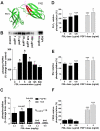
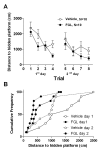
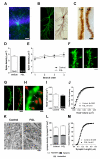
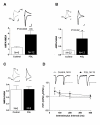
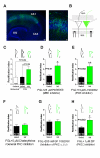
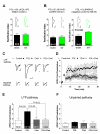
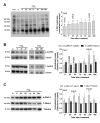
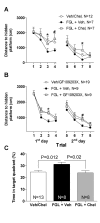
References
-
- Bliss T. V, Collingridge G. L. A synaptic model of memory: long-term potentiation in the hippocampus. Nature. 1993;361:31–39. - PubMed
-
- Tang Y. P, Shimizu E, Dube G. R, Rampon C, Kerchner G. A, et al. Genetic enhancement of learning and memory in mice. Nature. 1999;401:63–69. - PubMed
-
- Doherty P, Fazeli M. S, Walsh F. S. The neural cell adhesion molecule and synaptic plasticity. J Neurobiol. 1995;26:437–446. - PubMed
Publication types
MeSH terms
Substances
LinkOut - more resources
Full Text Sources
Research Materials
Miscellaneous

